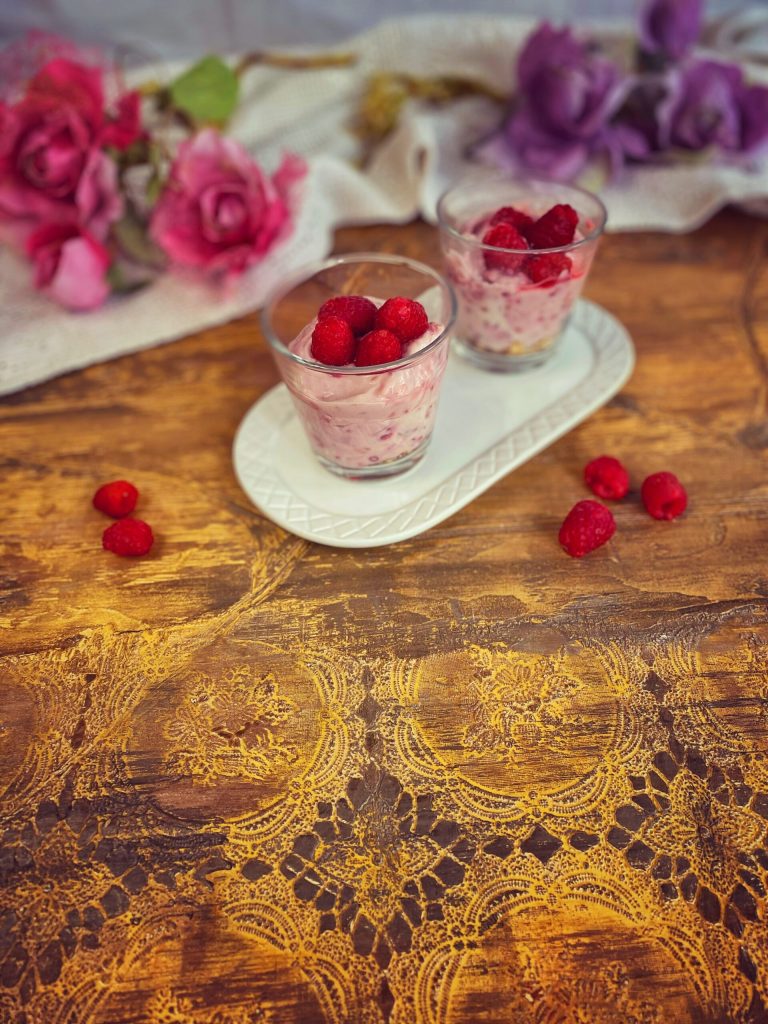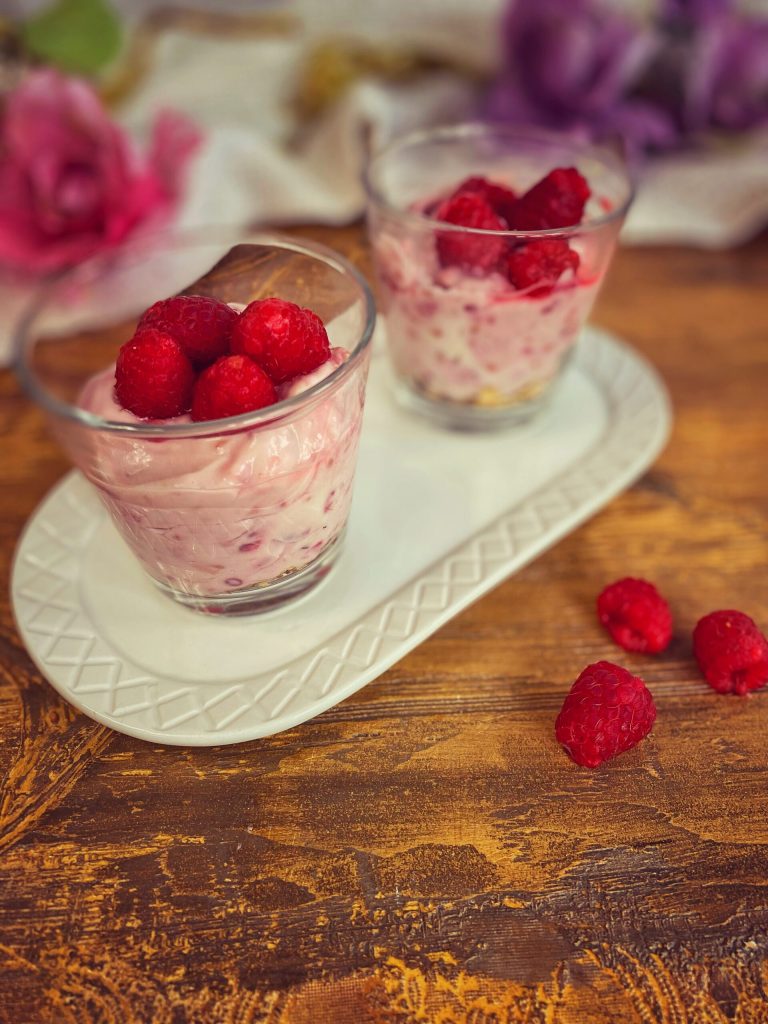The Cranachan is a traditional Scottish dessert, known as the “undisputed king of Scottish desserts”.
▶Originally, it was a harvest celebration, held after the raspberry harvest in August. The dessert is indeed made with fresh raspberries, double cream or clotted cream (a type of kitchen cream, equivalent to a heavy or whole cream) enriched with oats and whisky (sometimes omitted).
▶Cranachan owes its origins to crowdie, a popular breakfast where crowdie cheese (a type of fresh soft cheese made from cow’s milk) is combined with lightly toasted oats, cream, and local honey.
The original recipe used crowdie cheese instead of or in addition to cream and was sometimes called “cream-crowdie”.
▶More modern recipes have replaced crowdie cheese with whipped cream.
▶▶My version is the original, with cheese.
It is usually served in a glass, although sometimes all the components of the dessert are brought to the table separately, allowing diners to assemble their own cranachan according to their own tastes, adding more or less oats or an extra shot of honey.
Another great Scottish dessert:

- Difficulty: Very Easy
- Cost: Economical
- Preparation time: 5 Minutes
- Portions: 6 People
- Cooking methods: No Cook
- Cuisine: Scottish
- Seasonality: Winter, Spring
Ingredients
- 2 tablespoons oats
- 12.35 oz crowdie – spreadable cheese (or clotted cream or cream)
- 2 tablespoons honey
- 2 tablespoons whisky
- 5.29 oz raspberries
Steps
Toast the oats.
Whip the cheese (or cream), add the honey and whisky.
Crush half of the raspberries and add the mash to the cheese.
Assemble the dessert in small glasses with oats at the base, then the cheese cream.
Decorate with the remaining raspberries.

Now it is served year-round rather than just during the harvest period, and it is very likely to be found on menus as part of a dinner during Burns Night on January 25th.
This is a traditional feast based on haggis, neeps, and tatties, often followed by cranachan; an annual celebration of Robert Burns, one of the most famous Scottish poets.
FAQ (Questions and Answers)
How is clotted cream prepared?
Clotted cream, also known as Cornish cream, is a thick cream obtained from unpasteurized milk originating from Devon and Cornwall, where it is served at tea time with scones.
It is a thick cream obtained by steaming or bathing whole cow’s milk and then letting it cool slowly. During this time, the cream content rises to the surface and forms “clots”, hence the name.
The clots that formed on the surface were then removed with a long-handled skimmer.
Today, there are two distinct methods to prepare it.
The “float cream method” involves scalding a floating layer of double cream in the milk (skimmed or whole) in shallow trays.
To scald, the trays are heated using steam or very hot water.
After the mixture has been heated for an hour, it is slowly cooled for 12 hours or more, before the cream is separated and packaged.
The “scald cream method” is similar, but the milk layer is removed and a layer of cream is used, which has been mechanically separated to a minimum fat level.
This cream is then heated similarly, but at a lower temperature and after a certain period of time is cooled and packaged.
To make it “home-made”, you can follow this recipe.

